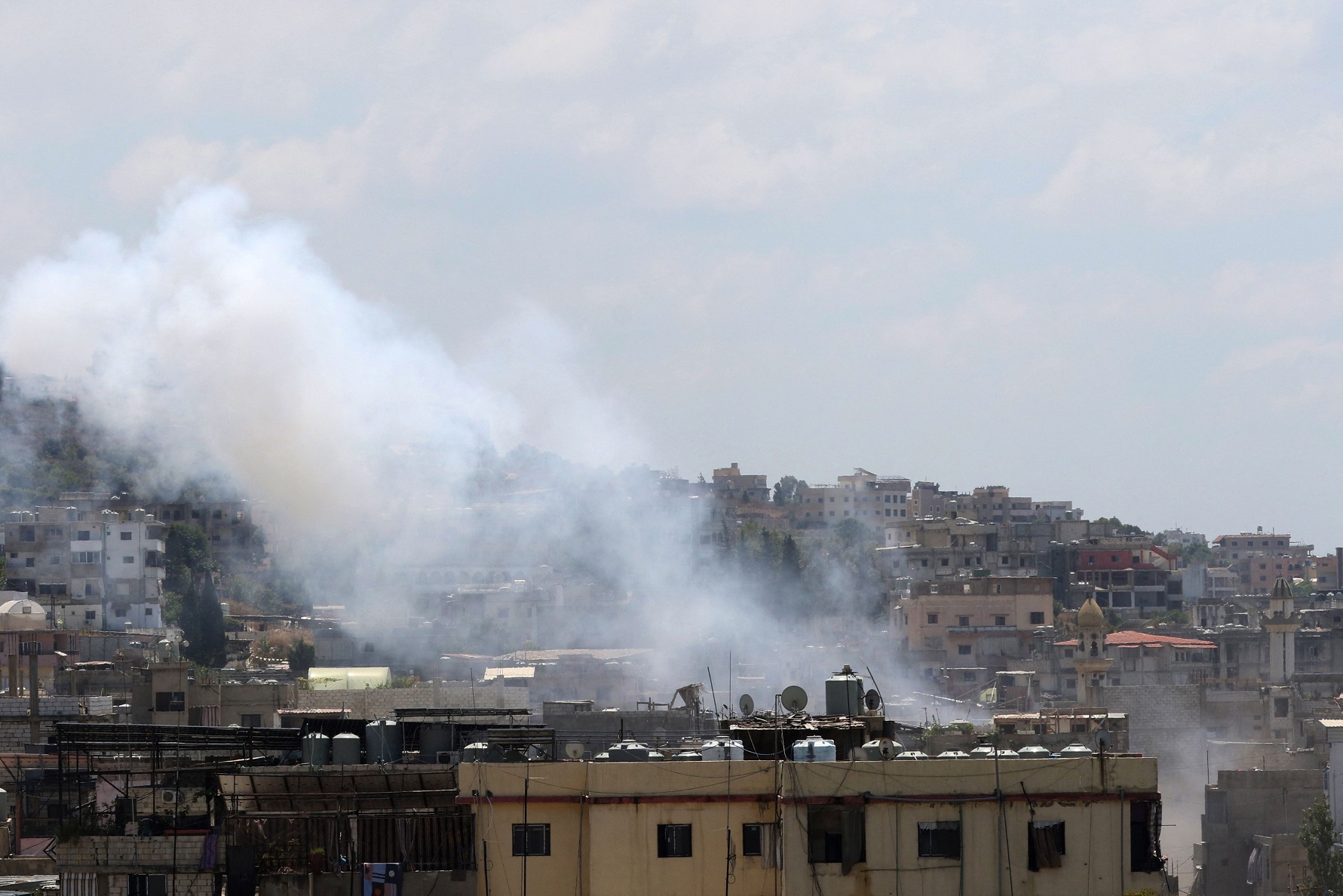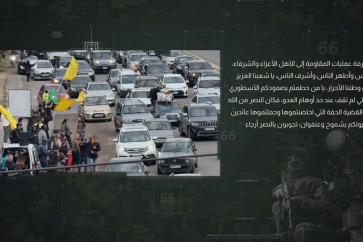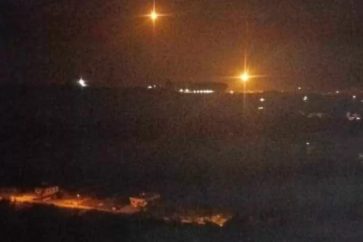Ibrahim Al-Amin*
Translated by Areej Fatima A-Husseini
The perception of conspiracy in the Arab world is ambiguous, to the extent that Arabs could be skeptical of major conspiracies, even if the details are revealed over time. Those who grasp the conspiracy’s details are mostly incapable of tackling it, given its concealed or obscured elements. However, if there are Arabs and Lebanese who remain skeptical of the ongoing conspiracy against the Palestinian cause, then this is certainly an unsolvable dilemma.
US-Led Meetings
The funding for UNRWA, which is in charge of providing relief and jobs to Palestinian refugees, started to dwindle at least 10 years ago, while alternatives were pushed by Western-funded organizations. Hence, the number of those wishing or seeking to immigrate to other countries around the world rapidly increased! During that time, meetings were held under the leadership of the United States, where delegates from Lebanon, the country harboring the greatest number of Palestinian refugees, were present.
In a famous meeting in Amman, Jordan, 9 years ago, a US official apprised the Lebanese to “think rationally” and stop repeating the “chant of Resolution 194″.
In that meeting, and in the presence of Dorothy Shea, the current US ambassador to Beirut, the aforementioned US official called on Lebanon to relocate Palestinian refugees in order to pave the way for their naturalization.
To avoid interrogation, the American official added, “Palestinian refugees in Lebanon are no more than 200,000, some of whom seek to travel to the West, and a minority is considering moving to the Gaza Strip. Thus, Lebanon must welcome those who remain and integrate them residentially by relocating them from camps to cities. In addition, the country must integrate them socially and economically by lifting the ban on practicing certain professions and providing them permanent residency while they await citizenship.”
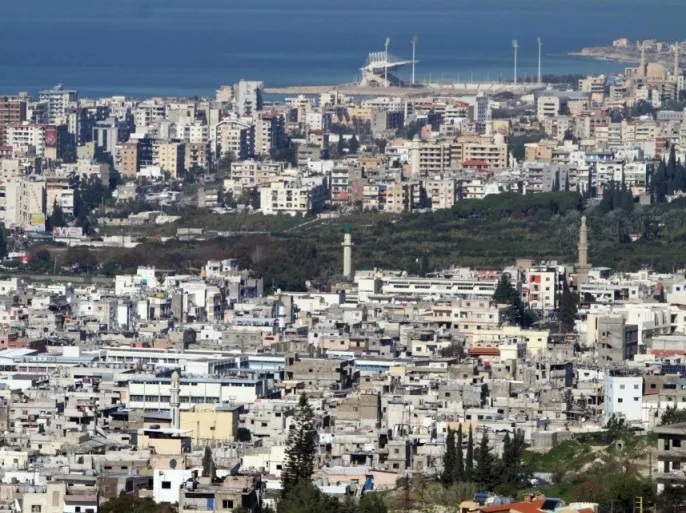
Fatuous Endeavors
Although many things happened since then, this goal was not achieved, as the outcomes of the Syrian war hindered the project aimed at ending the Palestinian refugee issue in Lebanon, Syria, Egypt and Jordan. Also, the resistance powers in Lebanon and Palestine have expanded, and the Palestinians have achieved victories that effectively permit them to return to their homeland. All of this, however, offered another reason for the US to speed up their efforts, the ultimate goal of which was to annihilate the Palestinian refugee camps in Lebanon.
Official Arab Document: The US Scheme
Back to 2023, when Palestinian General Intelligence Chief Majid Faraj visited Lebanon in the second half of July, many denied that his visit had anything to do with any adverse incidents in Lebanon. At the end of July, under the pretext of an assassination, clashes broke out in the Ain Al-Hilweh refugee camp in Sidon. Such clashes often involve unidentified assailant assassinations and result in open battles. Thereupon, some came out to clarify that there had been no coordination between the US and their allies in the region in a bid to ignite the refugee camps ahead of their removal and destruction.
Those who spoke out about a US scheme were accused (including us) of helping to demonize the Fatah movement and blaming the Ramallah-based Palestinian Authority (PA). However, the embassy of a prominent Arab country in Beirut, which has no link with Al-Akhbar newspaper, was observing and gathering data as well as preparing a report for its government that outlined the political and security developments in the past two months in Lebanon. The document concluded that what is happening is part of a US scheme—full stop!
What’s inside the Document?
Al-Akhbar Daily publishes the content (incomplete for professional reasons) of a “top secret” document prepared by the aforementioned embassy, which states:
“For quite some time, there have been early American preparations to eliminate the Ain Al-Hilweh camp in southern Lebanon, as it is a major address for Palestinian asylum seekers in the diaspora. This practice was initiated by military leaders and officers sent by Washington in recent years.” “The repeated clashes in the Ain Al-Hilweh camp between the Fatah movement and extremist groups are not isolated from the secret visits of American military delegations to the area overlooking the camp. At the time, American delegations linked with the US Central Command (CENTCOM) had repeated field visits, resulting in at least three visits in 2018, the most notable of which was to then CENTCOM Commander General Joseph Votel”, the document adds.
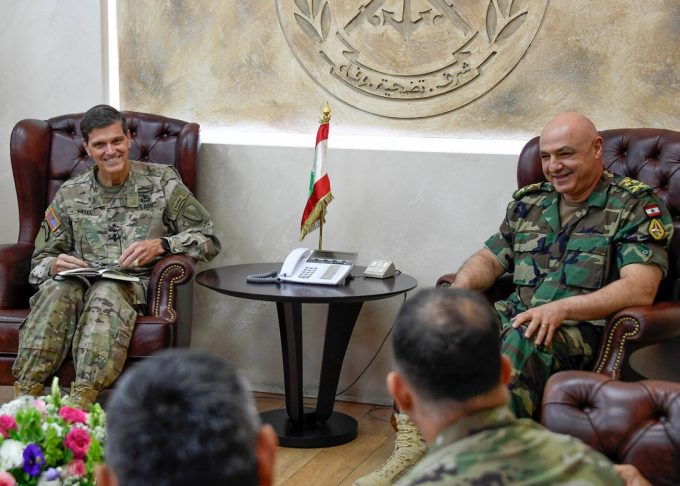
The document also attributed to Lebanese security sources that “General Votel requested, during a routine visit to the Lebanese Army Command, to arrange for him a reconnaissance tour to the vicinity of the Ain Al-Hilweh camp along with Lebanese officers who are familiar with this file.”
General Joseph Aoun, the Lebanese Army Commander, was surprised by this request, given that the commander of the CENTCOM, whose military authority extends from Afghanistan to Lebanon, could instead send a team of his officers for this purpose and that the camp does not represent a challenging aspect in terms of strategic military calculations, as per Aoun.
Indeed, the American general got what he sought, as he inspected the refugee camp of Ain Al-Hilweh from Serob Hill overlooking it. Votel was carrying precise maps of the camp and surrounding areas with him, and he asked the army intelligence team that accompanied him specific questions about the following points:
First: The reality of the camp, both geographically and humanly.
Second: The identities of the armed groups in the camp, their numbers and locations. Here, Votel stopped and asked specifically about the Ansar Allah group led by Jamal Suleiman and other Islamic groups.
Third: The number of displaced Palestinians who moved from Syria to Ain Al-Hilweh camp.
Fourth: The nature of the measures taken by the Lebanese army around the camp.
Fifth: Latest developments in the plan to build a cement wall around the camp.
The document also stated that, “As a follow-up to this visit, meetings continued between the American and Lebanese sides, and a technical team from the US CENTCOM visited the Lebanese Army Command in September 2018. The team met with the Army Commander, the Director of Intelligence, and the official in charge of the Palestinian file in the Army.
The incorporation of the “Basateen Al-Tayyar” area, which has served as a training camp for Ain Al-Hilweh’s prominent Islamic faction, the Asbat Al-Ansar (Ansar League), was also discussed. This League had previously been suspected of involvement in assassinations, most notably the deaths of four judges at the Sidon courthouse. However, its relationship with the Lebanese army improved in later years, particularly in terms of assisting in the regulation of smaller organizations’ actions.”
“The construction of a wall around the Ain al-Hilweh camp was originally based on an American proposal,” the document continued, “although the Lebanese army at time justified this step by the need for security measures in light of violations committed by armed factions from within the camp towards the surrounding area. However, opposition to this step did not prevent its fulfillment.”
The document continued: “Several terrorists who had previously left the camp to fight in Syria returned to Ain Al-Hilweh at specific times, contributing to tension within the camp and raising fears that this would be a prelude to blowing up the camp from within on the way to dismantling it and ending the Right of Return. This situation prompted Lebanese security sources to ask whether a specific Gulf country with ties to ‘Islamic’ groups, as well as the US, had pushed for the return of those militants, resulting in labeling the camp as a bastion of terrorism. This plan was accompanied by facilitating for several Palestinian youths in Ain al-Hilweh to travel to European countries, especially Scandinavian ones. Lebanese travel agencies carried out this process.”
In the report’s summary, “diplomatic sources outlined several goals for the tours and visits of American officers, including:
- Isolating the camp from its surroundings by a wall that allows the events occurring or that will occur within it to be separated.
- Making it more difficult for “terrorist groups” to enter and exit. The Americans claimed to know of the existence of roughly 500 armed terrorists inside the camp, including Saudis, Palestinians, Syrians, and Lebanese, during their subsequent conversations with the Lebanese side.
- The main goal, which the Americans withheld from the Lebanese side, is maintaining the Deal of the Century’s terms, imposing a scenario that exhausts the Palestinians, and forcibly relocating some of them to Lebanon and others to countries that can accommodate them.”
The document’s most significant conclusion appears in noting that “security sources are anticipating the occurrence of tensions and clashes occasionally in the Ain Al-Hilweh camp, under the guidance of Arab and American security services, to aggravate the situation and displace the camp’s residents. This serves the purpose of integrating a portion of these refugees into Lebanese culture while encouraging the remainder to move to foreign nations that provide special facilities in collaboration with the Israeli entity.”
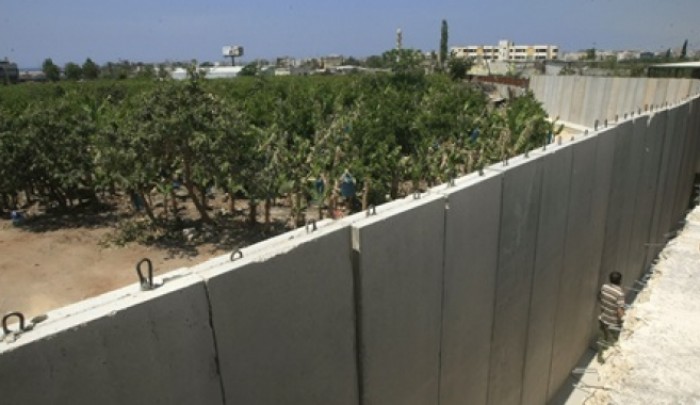
Votel: The wall and Special Forces in Lebanon
General Joseph Votel, whoserved as the CENTCOM Commander between March 2016 till March 2019, conducted a press conference with correspondents from Arab media at the end of January 2018, following a series of visits to Lebanon and other countries in the region. In response to a question by the Beirut0based newspaper The Daily Star correspondent, Victoria Yan, about the role of US Special Forces in Lebanon, he said: “I make frequent visits to Lebanon. I won’t delve into details about the particular operations we support, but our role is to enhance the capabilities of the Lebanese Armed Forces and help them confront terrorism in Lebanon and prevent its influence on the region.”
In April 2018, the residents of Sidon awoke to extraordinary measures taken by the Lebanese army before a military helicopter carrying an American military delegation with an official at the American embassy in Beirut landed on the city’s sports stadium, supported by another military helicopter. The delegation was led under heavy escort to the Muhammad Zgheib barracks in Sidon. Following a conference with army intelligence officers, the delegation visited the Serob region, overlooking the Ain Al-Hilweh camp, amid security measures along the road leading to the location.
It was later known that Votel was present in the US delegation. However, his deputy, General Charles Brown, undertook the same tour in September 2017, accompanied by officials from the American Embassy in Beirut. The delegation was briefed on the stages of construction of the security wall, which was scheduled to rise to more than 6 meters and be equipped with towers reaching a height of 9 meters, extending west and south of the camp towards Darb Al-Sim and up to the Al-Aytam area. Then, the Americans requested that the Lebanese army meet with the Palestine Liberation Organization factions and inform them that the goal of the wall is to defend the camp and that it should not be labeled a wall but rather a “protection fence” with the aim of “preserving the safety of the camp.”
*: The article is written by Ibrahim Al-Amin, CEO and Editor-in-Chief of Al-Akhbar Newspaper, on Monday, September 19, 2023.
Source: Al-Akhbar Newspaper

